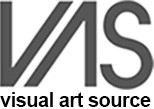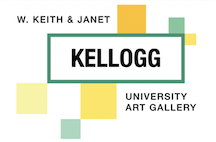To date, Morphesis' life work has represented not only a spiritual, but cognitive and ever personal journey of selfexploration–not only for the artist him-"self", but as a study of humankind's mutual self-examination. Traveling hand-inhand with historically religious uses of symbolism that emanate from early Christian and Easter Orthodox iconography, direct and indirect uses of memento mori*, and a masterful nod to Renaissance's chiaroscuro and impasto, his figurative work may, on the surface, speak for itself. However, while religiosity and its visual interpretations float on the surface, one can earn more by delving much deeper. By exploring the more profound meaning beneath layers, a subliminal encounter more personal in nature, evolves. Through archetypal and allegorically-infused subjects and themes, Morphesis offers an encounter with the existential, ontological and ever-ephemeral search for life's meaning: the philosophical questions regarding the nature of "being" and the understanding of "self", both internally, and communally as a human race, emerge. This probing expedition confronts our own inescapable mortality, and leads towards the always-elemental human query of spiritual immortality. Symbiotically fused with Modernist styles and techniques including abstraction, Cubism, assemblage, Abstract Expressionism, and Hyperrealism, Morphesis' six bodies of artwork also become a purposeful voyage through art historical disciplines of visual expression, while inevitably crossing through the self-imposed straights of autoreflection, and the human collective's conscientiousness.
Born in Philadelphia, Pennsylvania in 1948, Jim Morphesis received a Bachelor of Fine Arts degree from Tyler School of Art of Temple University in 1970 and earned his Master of Fine Arts degree from the California Institute of the Arts in 1972. Morphesis' paintings have been shown in forty-three, solo exhibitions and in more than one hundred and thirty invitational group exhibitions at museums and galleries including: the Los Angeles County Museum of Art, the Queens Museum of Art in New York City, the San Francisco Museum of Modern Art and the State Museum of Contemporary Art in Thessaloniki, Greece. Morphesis' paintings can be seen in the permanent collections of more than twenty-five museums including: the Los Angeles County Museum of Art, the Metropolitan Museum of Art, the Museum of Contemporary Art San Diego, the Oakland Museum of California Art, the Phoenix Museum of Art, the San Antonio Museum of Art, and the San Francisco Museum of Modern Art. For his work, Morphesis has been recognized with awards that include: the Los Angeles County Museum of Art, Modern and Contemporary Art Council, New Talent Purchase Award, the Louis Comfort Tiffany Foundation Grant for Painting and Sculpture and a First Prize at the Fourth Florence International Biennial of Contemporary Art. Jim Morphesis currently lives and works in Los Angeles, California.
The Kellogg University Art Gallery and the College of Environmental Design at Cal Poly Pomona are proud to present one of the largest selections of Jim Morphesis artwork ever exhibited at a single venue. Many of the works exhibited are displayed for the first time, or have not been featured publicly for several decades. This exhibition is made possible through the generous artwork loans courtesy of private collectors, the Garboushian Gallery, and the artist himself, along with various museum, college and university art collections from the Los Angeles and Orange County areas.
Curated by Michele Cairella Fillmore.
*memento mori (Latin: "remember that you have to die") is the medieval Latin Christian theory and practice of reflection on mortality, especially as a means of considering the vanity of earthly life and the transient nature of all earthly goods and pursuits. In art, memento mori are artistic or symbolic reminders of mortality often represented by the use of a skull, lively floral or fruit still lives, or in contrast dying floral arrangements, or and by food, dead animals and meat (nature mort: "dead nature" still life) most often with religious symbolic connotations.






